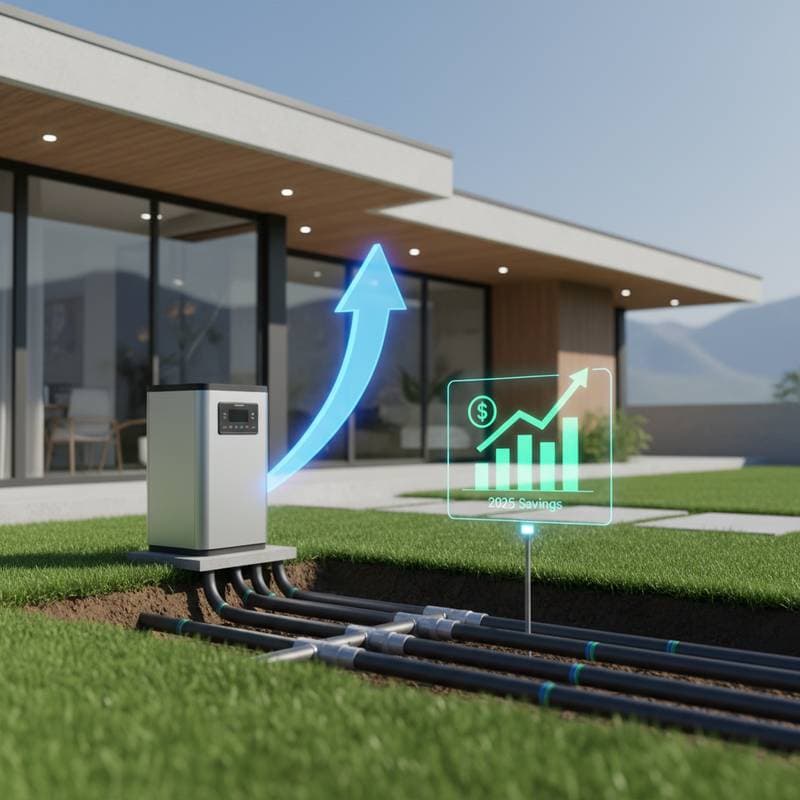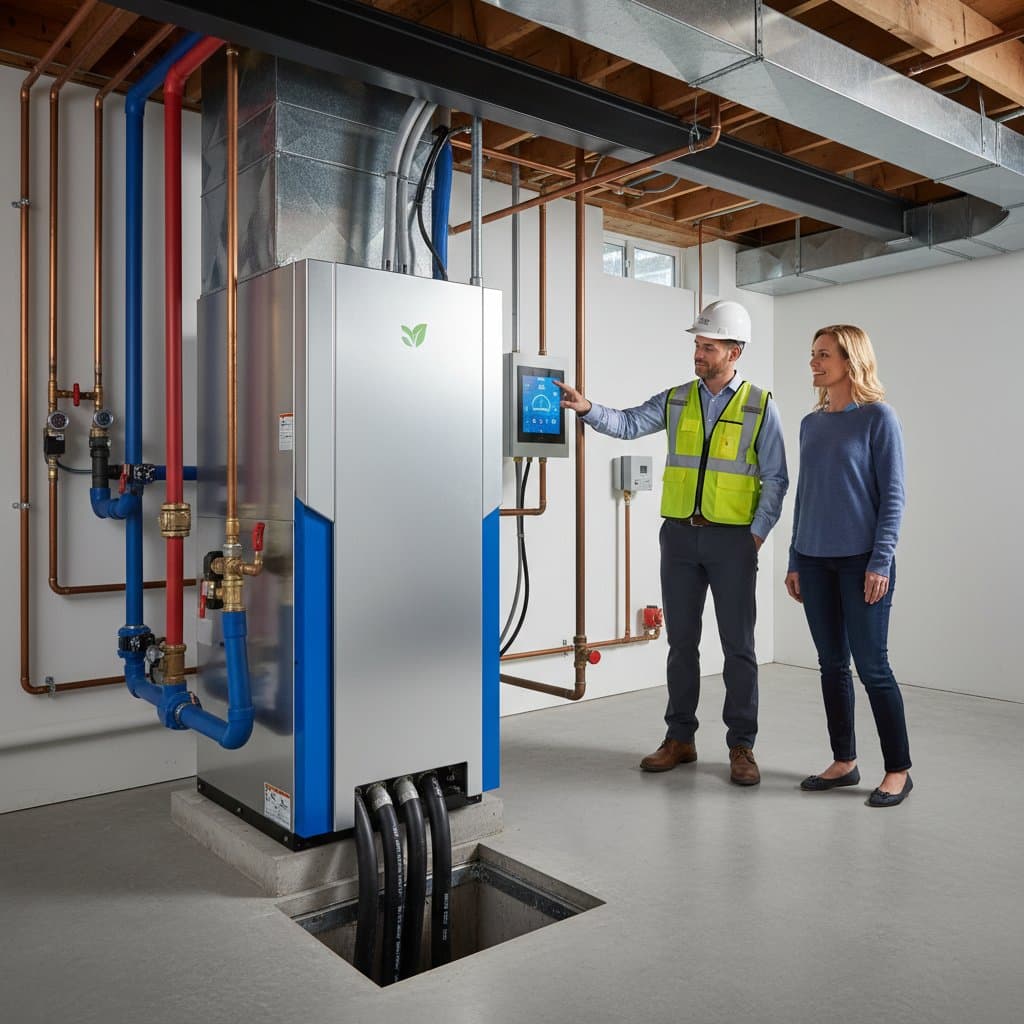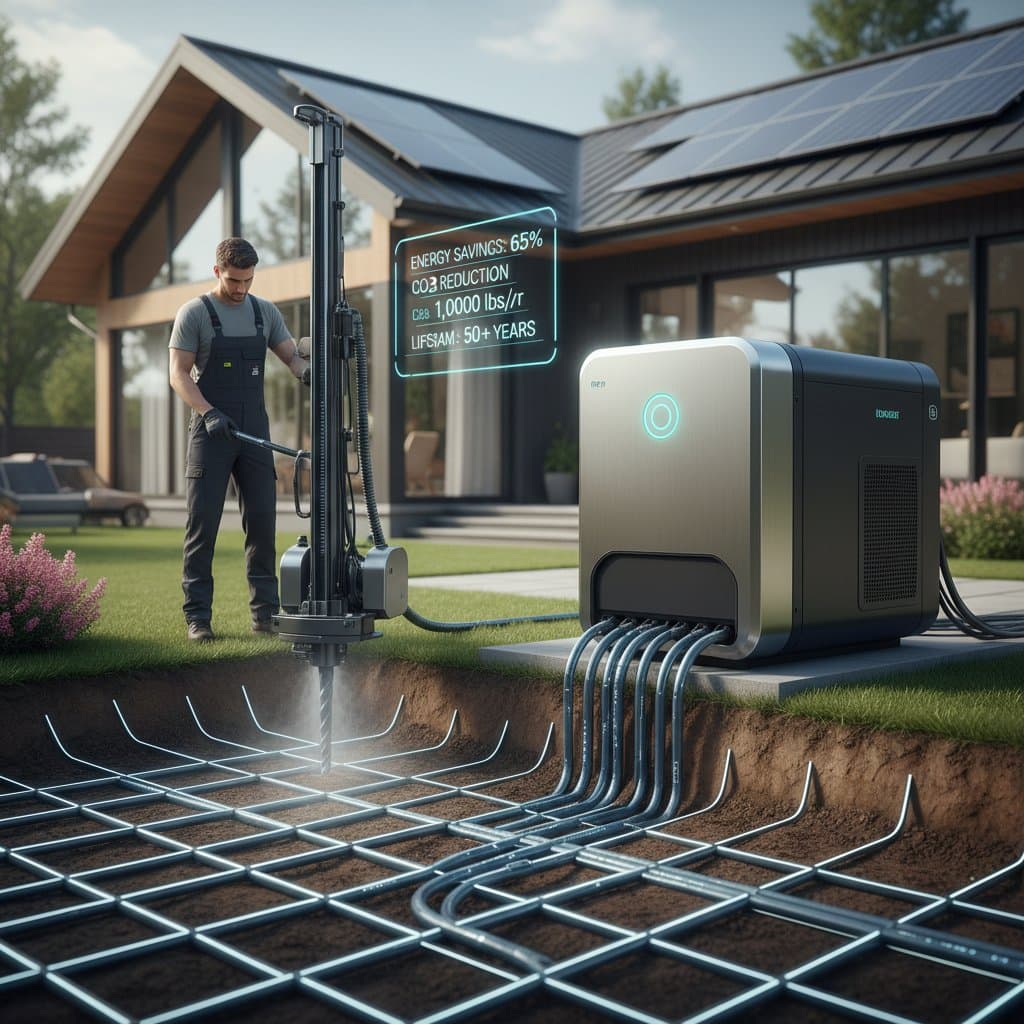Key Points
- Geothermal heating and cooling can cut HVAC energy use by up to 60 percent, reducing both utility bills and carbon footprint.
- Ground-source heat pumps provide consistent comfort and long equipment life, often exceeding 20 years indoors and 50 years underground.
- While upfront installation costs are higher than traditional systems, the long-term return on investment is compelling, with many homeowners recovering costs in 5 to 10 years.
- Proper design, soil conditions, and professional installation are critical to achieving expected savings.
- Financing options, regional incentives, and energy savings make geothermal systems accessible at multiple budget levels.
How Geothermal Systems Work
At the heart of a geothermal setup is the ground-source heat pump. Unlike a furnace that burns fuel or an air conditioner that battles outdoor heat, this pump transfers energy between your home and the ground. Because the earth maintains a relatively steady temperature just a few feet below the surface, the system can draw heat in the winter and release heat in the summer with far less effort than conventional HVAC equipment.
There are two main components:
- The ground loop: A series of pipes buried underground, either vertically or horizontally, that circulates fluid to exchange heat with the earth.
- The indoor unit: A heat pump that extracts or deposits heat from the fluid and distributes it through ductwork or radiant flooring.
By leveraging the natural thermal stability of the ground, geothermal systems achieve efficiency ratings that far surpass even high-end conventional systems.
Durability and Maintenance Advantages
A common concern is whether geothermal systems require more upkeep than conventional HVAC. In reality, the opposite is true. The underground loops can last half a century or more. The indoor heat pump usually lasts twice as long as a standard furnace or air conditioner.
Routine maintenance is simple, usually involving filter changes and occasional system checks. The absence of outdoor condenser units means less exposure to weather-related wear and tear. Over the life of the system, lower maintenance costs add measurable value.
Environmental Benefits That Pay Forward
Reducing HVAC costs by 60 percent is impressive, but the environmental impact is equally compelling. Geothermal systems use renewable thermal energy stored in the ground, cutting greenhouse gas emissions and reducing reliance on fossil fuels. Each home that adopts geothermal helps reduce the demand for non-renewable energy production.
For homeowners who want their investments to reflect personal values, geothermal is one of the most effective ways to align financial savings with environmental responsibility.
Financing and Incentive Options
For many homeowners, the biggest barrier is upfront cost. Fortunately, financing solutions are widely available. Options include:
- Energy-efficient mortgages that increase borrowing capacity based on projected utility savings.
- Home equity loans or lines of credit, which spread the cost over longer periods.
- Utility and government incentives that can reduce net costs by 10 to 30 percent depending on local programs.
When combined with energy savings, these financial tools make geothermal systems feasible for households across different income levels.
Making It Happen
If geothermal seems like a fit, the next step is consulting with certified contractors who specialize in ground-source systems. A professional can evaluate your property, calculate energy loads, and recommend the most efficient loop design.
Start by:
- Requesting site evaluations from multiple licensed contractors.
- Comparing system proposals with clear breakdowns of costs, savings, and warranties.
- Reviewing financing options to align with your household budget.
- Planning for long-term comfort by considering insulation upgrades and ductwork improvements alongside installation.
Every home is different, but the financial and environmental logic of geothermal is consistent. By investing in ground-source heating and cooling, you not only cut HVAC costs by up to 60 percent, you create a more comfortable, healthier, and future-ready home.
For homeowners serious about sustainable living and smart financial planning, geothermal is not just an alternative. It is the strategic upgrade that pays dividends for decades.








